Some posts on this site contain affiliate links. If you book or buy something through these links, I earn a small commission (at no extra cost to you). Take a look at my privacy policy for more information.
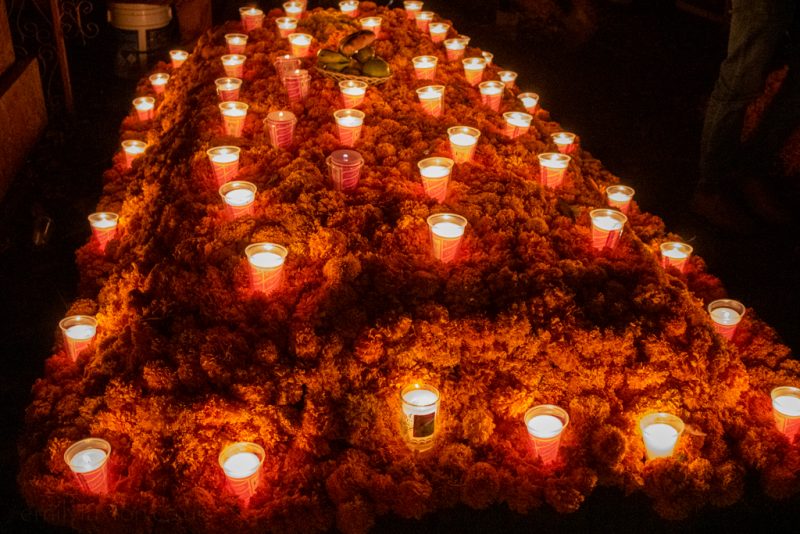
Dia de Muertos in Patzcuaro Lake, Michoacan, sometime close to midnight…
Street lamps glowed yellow on wet cobbles. Above us, a lone paper lantern floated towards the heavens. The night was cold, clear, expectant. Somewhere up ahead, music was pulsing through still night air that smelled of rain, grilling meat, corn, spices. The sounds and smells of a party, calling to us, luring us through the empty streets of a small Mexican town.
As we drew towards the panteon, flickering candles lined the streets, casting their shivering light onto trails of marigolds. Leading the way, not only for us, but for the spirits who return to earth once a year on Dia de Muertos.
Whether or not you take that literally, the warmth and love of this festival of remembrance truly allows the dead to live on through their loved ones. On Dia de Muertos, the veil that separates the living from the dead seems thinner. Especially around Patzcuaro Lake in Michoacan state.
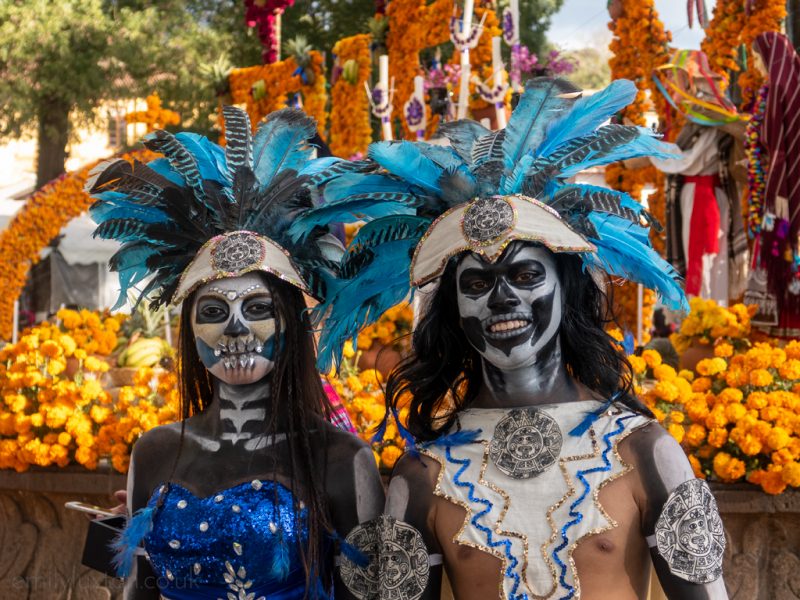
Dia de Muertos in Patzcuaro
Patzcuaro Lake in Michoacan is considered one of the best places in all of Mexico to witness the festival of Dia de Muertos. Although Oaxaca is perhaps more famous for Day of the Dead, Patzcuaro is more traditional and has a more authentic feel.
This is also where you’ll find the town that inspired Disney’s Coco; Santa Fe de la Laguna. Just like Miguel’s village, all the towns around Patzcuaro Lake follow the same distinctive architectural style; with a three-foot-high red border skirting the white-washed walls of almost every building.
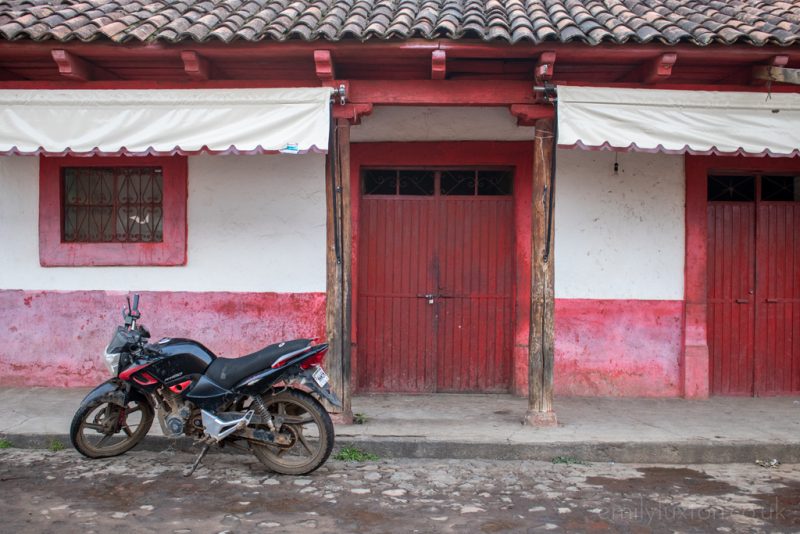
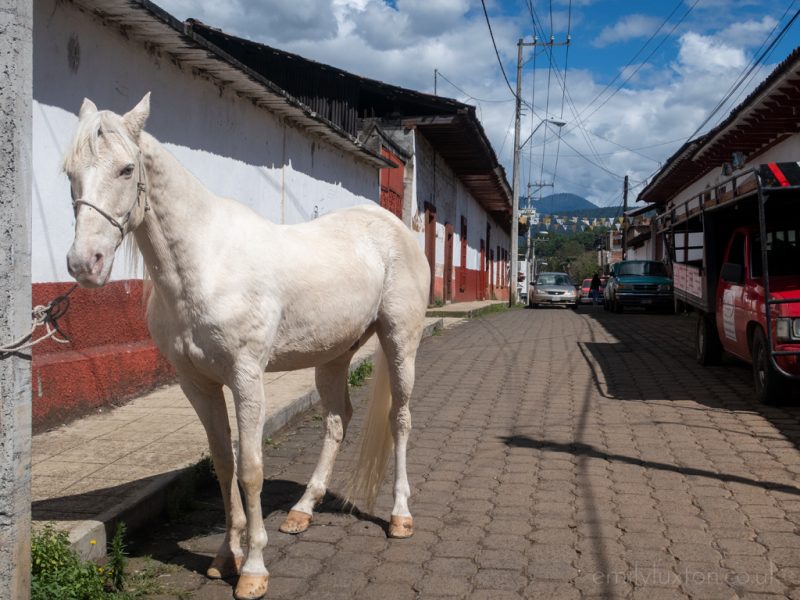
At around ten in the morning, six of us – locals and gringos, a jumble of new and old friends – squashed ourselves into a pickup truck (loaned at the eleventh hour by my friend’s brother) and bounced our way through the Michoacan countryside to the lakes.
That truck became our uncomfortable and joyous home for the next 21 hours. Squeezed into the backseat, singing along to Reggaeton, Mexican classics, even – at one point – the Coco soundtrack, winding along roads that could have been lifted from the Swiss Alps, we circuited Patzcuaro Lake, visiting village after village. Colourful crepe bunting fluttered between the one-storey red-and-white houses. Stalls exploding with handicrafts and local street foods lined every street. Garlands of marigolds hung on every available surface. A party was coming, and the air buzzed with it.
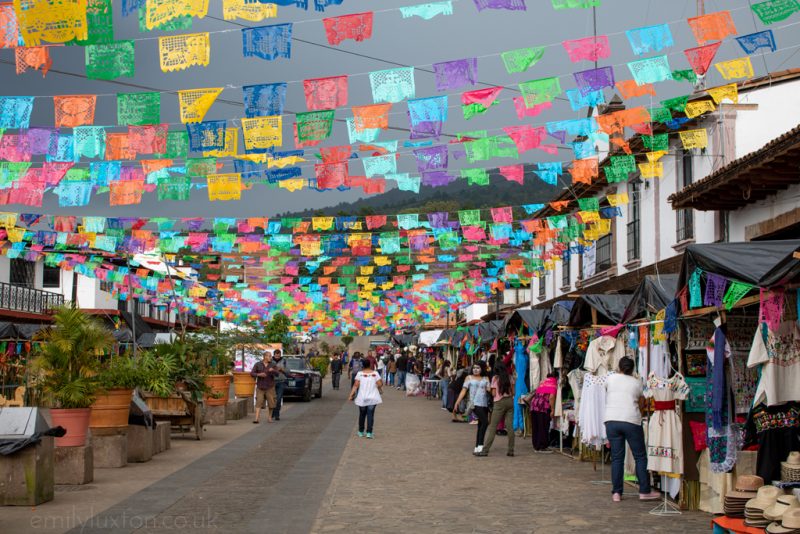
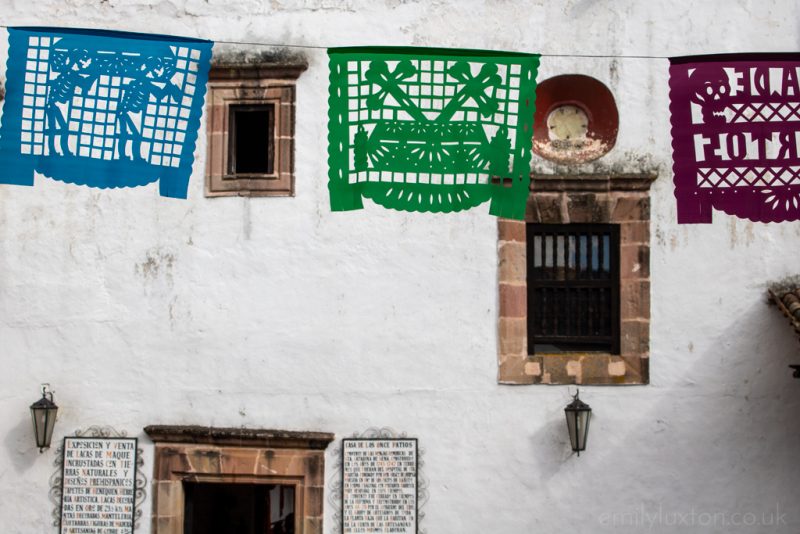
A Party Atmosphere
You might think that a festival of the dead would be a sombre affair. But, in Mexico, nothing is ever sombre. This is a land of colour, joy, passion, spirit. A land where it truly feels that the dead could just walk again.
Street markets took over towns, as in Santa Clara del Cobre, a town famous for copper production. Everywhere we looked, copper glinted in the afternoon sunlight; mugs hanging from display racks, towering piles of jewellery, rose-tinted copper crowns atop papier-mache Catrinas. The town was an Aladdin’s cave, scattered with marigolds and painted faces, while locals set up a stage in the central plaza ready for the evening’s festivities, and music played.
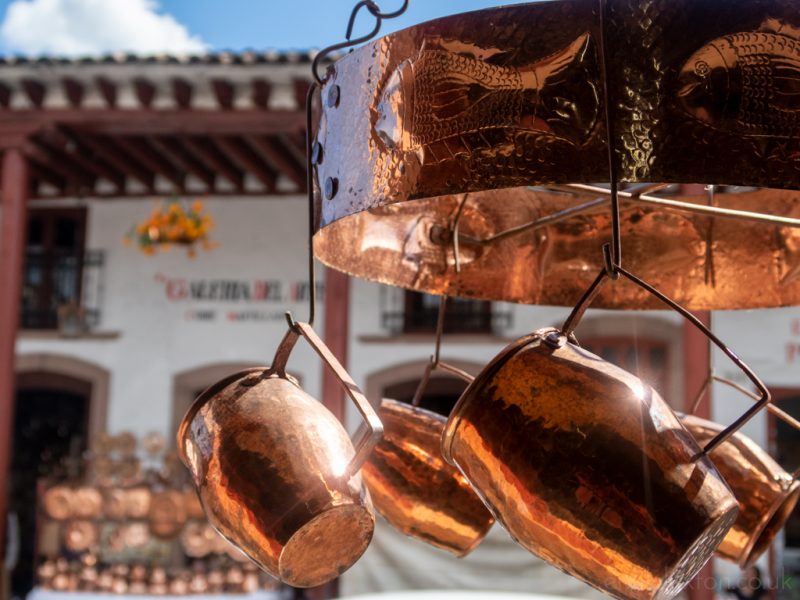
In Patzcuaro, the largest town on the lake, the street market was even bigger and busier. Local students were preparing for a Catrina Parade, and skeleton-faced couples in extravagant costumes and glittering ballgowns roamed the streets, handing out fliers and posing for photos. Unable to resist, I paid a local for my own facepaint, joining innumerable other Catrinas on the streets.
Originally a cartoon by Mexican printmaker José Guadalupe Posada, La Catrina – a glamorously dressed skeleton woman – has become a symbol of Dia de Muertos. It’s also a striking example of the Mexican willingness to laugh at death. Death is simply treated differently here: it is not the end, and therefore seems less scary.
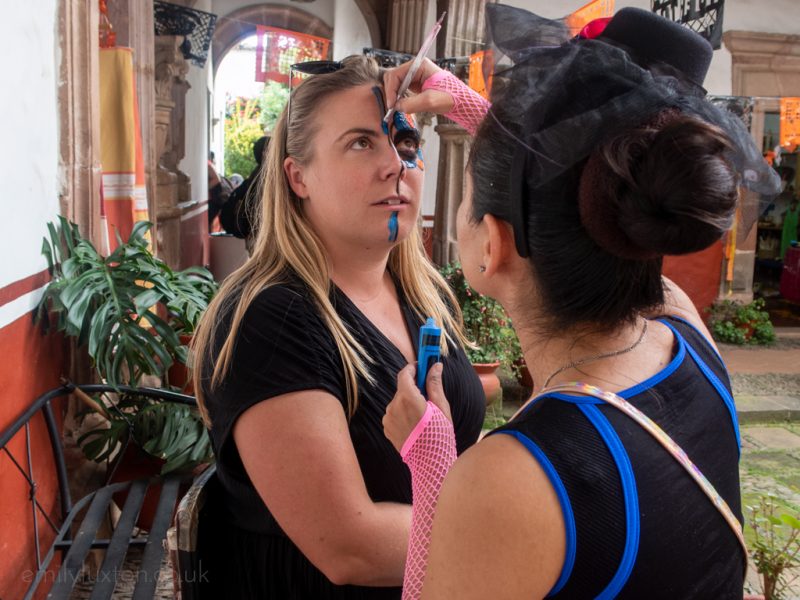
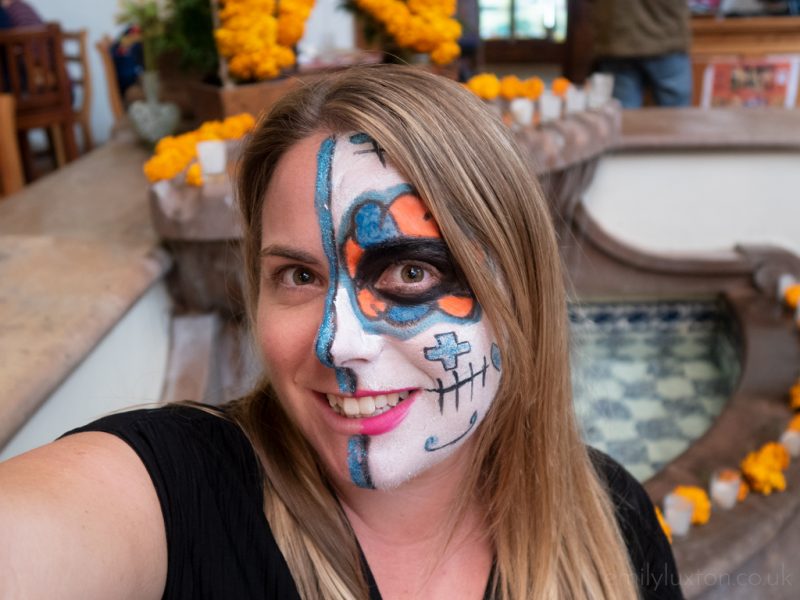
After Dark
By nightfall, we were pulling out of Patzcuaro, leaving behind a chaos of arriving traffic. It’s one of the most popular places to spend Dia de Muertos in Michoacan, but it’s busy – and our local friend Mauro had better ideas.
Tzurumutaro Cemetery glowed like fire in the darkness. Thousands of candles, dotted in lines along the pathways and around or on top of tombs, casting their amber light on the ubiquitous marigolds. Everything was orange. Garlands swamped tombs and trailed from tree branches. Floral towers arched proudly above graves.
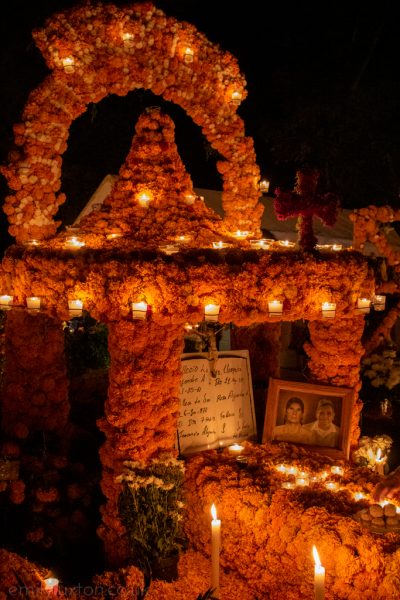
Crowds of people flowed through the cemetery. Some held vigil at the graveside, lighting candles and arranging flowers. Some spoke in murmurs, perhaps sharing stories of their loved ones. Remembrance is front and centre at Dia de Muertos; this is a day to honour the dead, to ensure they are not forgotten.
Arriving into Ihuatzio, we overtook a procession on the side of the road. A full brass band, led by a man holding a huge tower of marigold garlands. They stomped through the rain-soaked mud to the cemetery, jubilantly noisy, and stopped around a tomb close to the entrance.
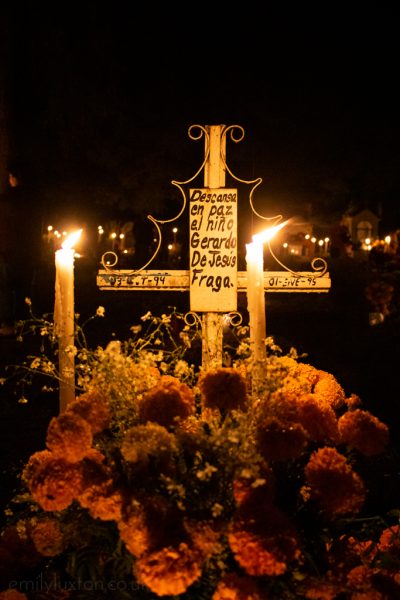
The first year after someone dies, it’s a tradition to place floral towers on their grave at Dia de Muertos. There’s often a festive amount of fanfare involved, with bands playing the deceased’s favourite songs. Again, the mood was joyous, surprisingly lacking in the melancholy I usually associate with graveyards. A lively, upbeat tune filled the cemetery as family, friends, and musicians crowded around the grave.
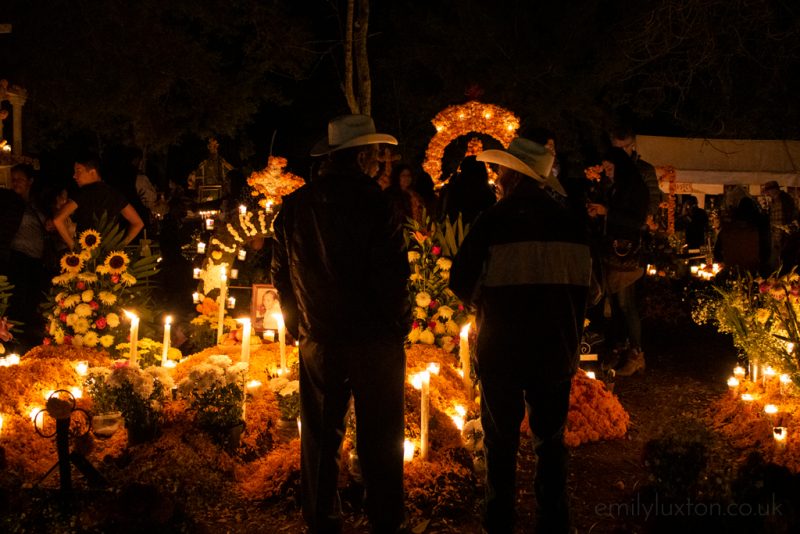
This is how I want my death to be. Not a mournful passing but a celebration of my life, and of life and love itself. Play my favourite songs, talk about the life I led and all the stupid things you remember me doing, eat my favourite foods, and save a slice of cake for me. As long as we hold the dead in our hearts and memories, they can live again through us.
And then on till morning…
In Tzintzuntzan, the traffic closed behind us as we arrived. Not knowing that we were effectively trapped in the town, we delved into the festivities – the liveliest yet – and marched up a hill lined with street food stalls, pop-up bars, and steaming cauldrons of hot ponche (a spiced drink). At the top, the remains of an ancient Purépecha settlement stood, floodlit, like something torn from the world of the dead itself.
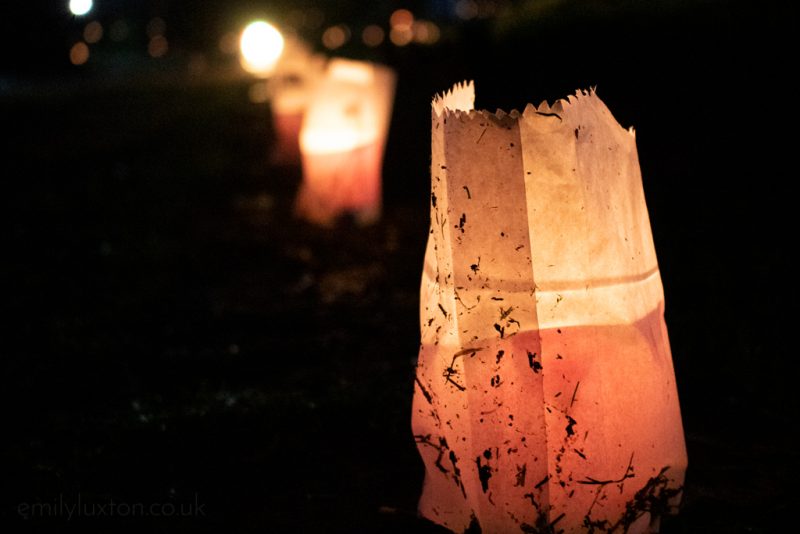
After passing blearily through another cemetery – also glowing amber with the light of endless candles, but this one rippling with the crackled sound of women praying the rosary, blasted through a tinny sound system – we tried to leave the town for the first time. Nearly an hour passed stuck on in a queue of traffic (caused by colectivo drivers who’d simply parked in the middle of the road), before we gave up and delved back into Tzintzuntzan’s street party.
Gone midnight, we stopped for a dinner of enchiladas and hot ponche while apocalyptic rain thundered down on the tarpaulin overhead. The tarp sagged deeper and deeper above us, until someone finally realised it was at danger level and used a broom to direct the built-up water in an impressive waterfall. Dinner and a show!
Eventually, we made it out of Tzintzuntzan, only to find ourselves trapped further down the road behind parked coaches. Sinking deeper and deeper into delirious exhaustion, the mood inside our pickup ping-ponged between frustration and hilarity.
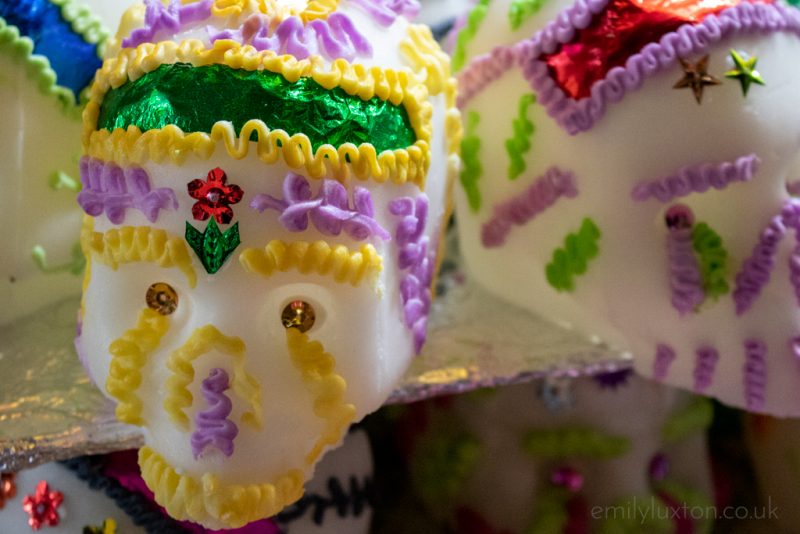
Janitzio Island
Humour – and stubborn determination – won out in the end. Which is why we found ourselves, sometime after 4am, on a ferry speeding over Patzcuaro Lake. According to the legends of the local Purépecha indigenous people, this lake is the gateway to the world of the dead, and Janitzio Island is something of a sacred place. Making it the ideal endpoint for Dia de Muertos at Patzcuaro Lake.
Wandering through the graveyard felt like a living dream as I battled exhaustion, wide-eyed, trying to take in every sight. As well as the familiar marigolds and candles, the graves were also decorated with fruit. The cemetery was still crowded, even at 4 in the morning. It’s traditional to stay at the graveside all night, and many locals do so. This is, after all, the only night that the spirits of the dead can return to the land of the living.
We too were up the whole night. We drove back to Morelia with the sunrise glowing pink ahead of us, lighting the fertile valleys of Michoacan state. Giddy, exhausted, and overwhelmed by the magic I’d witnessed on that endless journey through the night of the dead, I fell into bed at seven in the morning.
“Our dead are never dead to us, until we have forgotten them.”
– George Eliot
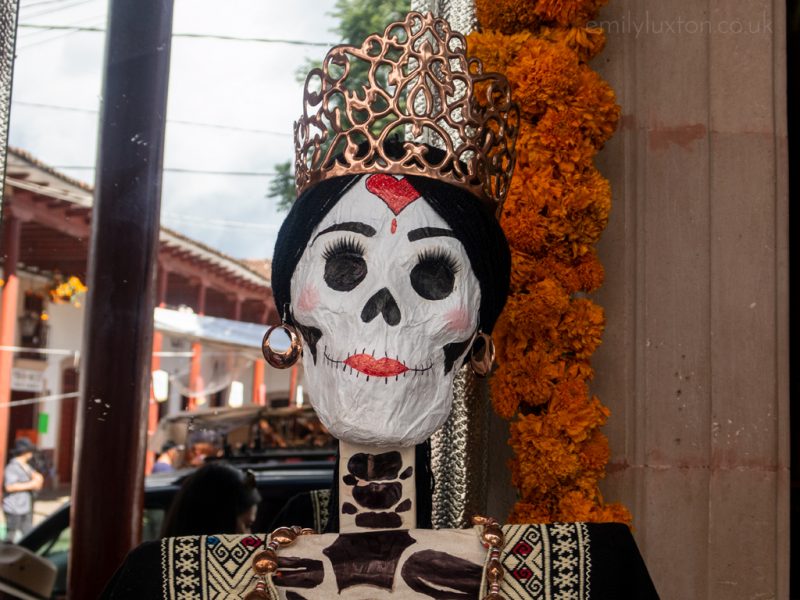
Joy, celebration, and warmth. That’s what I remember about Dia de Muertos in Patzcuaro Lake. Abundant, palpable joy – even in the face of death and mourning. A celebration to honour the dead. Warmth, welcome, laughter, community. It was, first and foremost, a party. This is how I want to treat death, and how I want to go myself. Remembering that, as Sirius Black once said, the dead we have loved never truly leave us.
By celebrating their dead once a year, Mexicans ensure that they are never truly gone. They live on within us, in our memories and our hearts. They live on in our words, opinions, and actions, too; in the ways they shaped us. Remember your dead with joy and with love, and perhaps their spirits will walk again on Dia de Muertos.
Dia de Muertos at Patzcuaro Lake – Video
Read More
19 Epic World Festivals for your Bucket List!

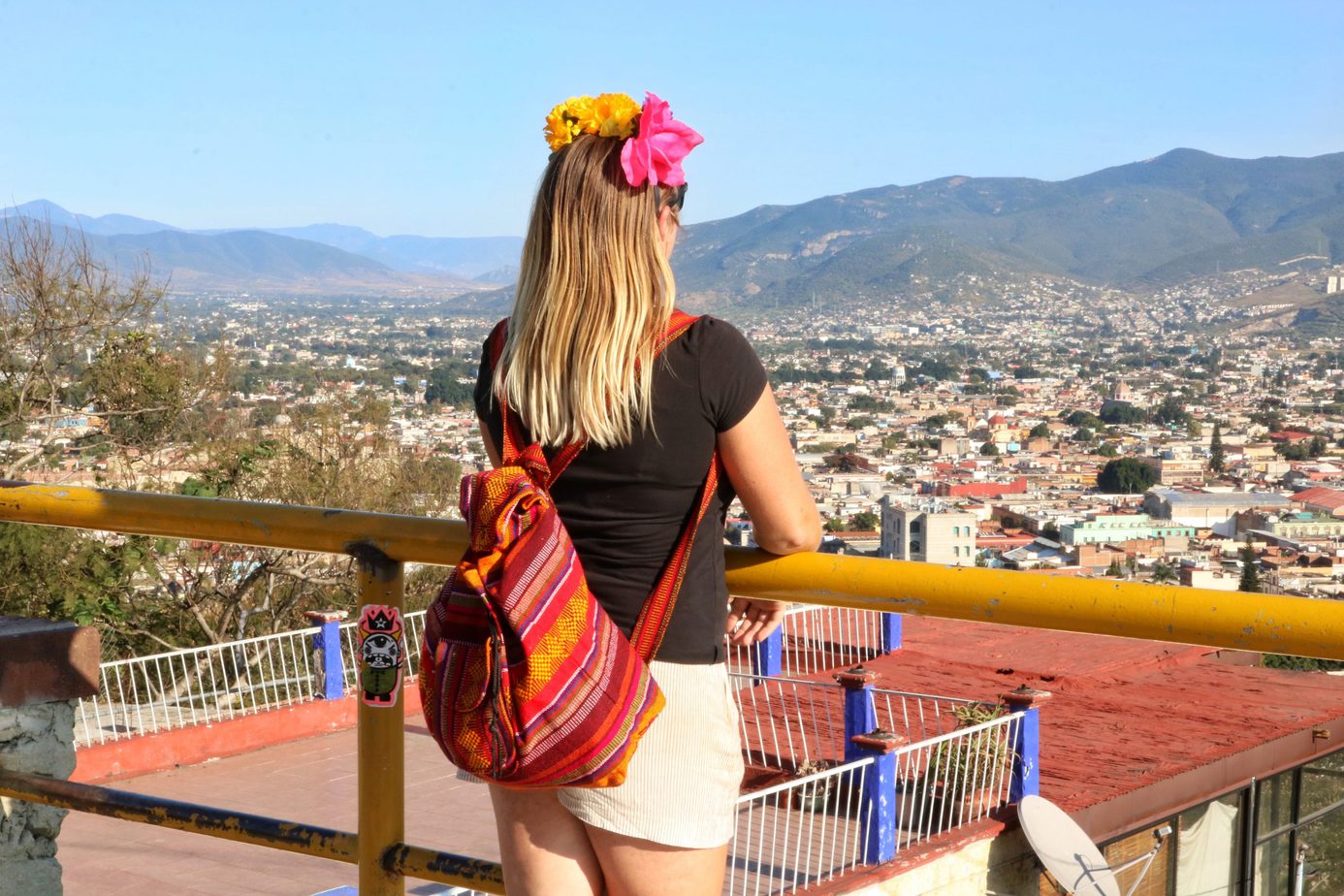
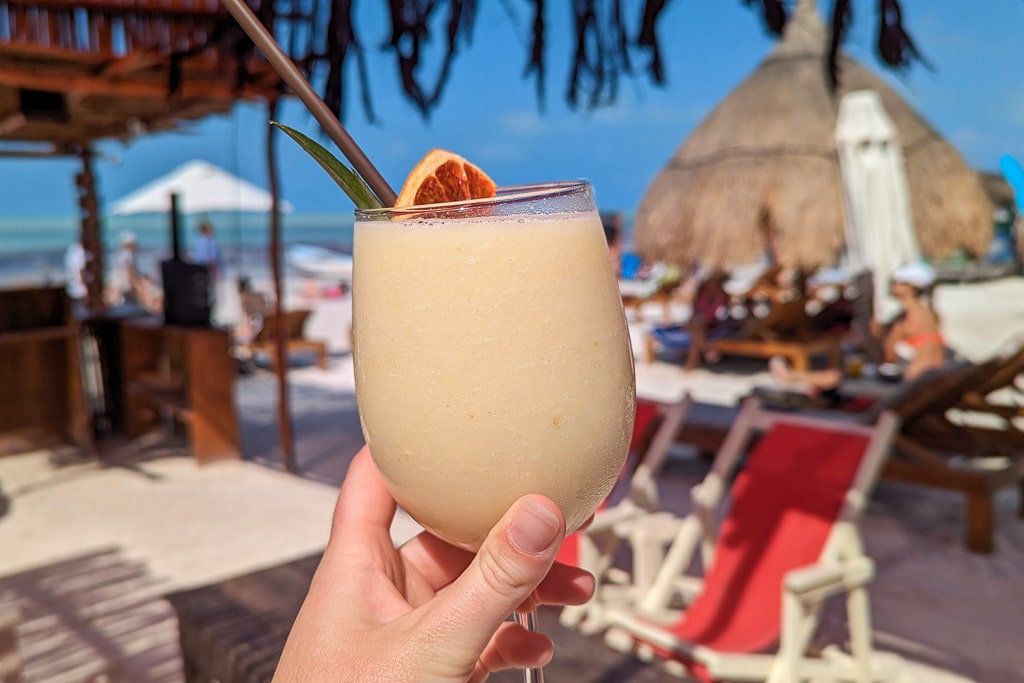
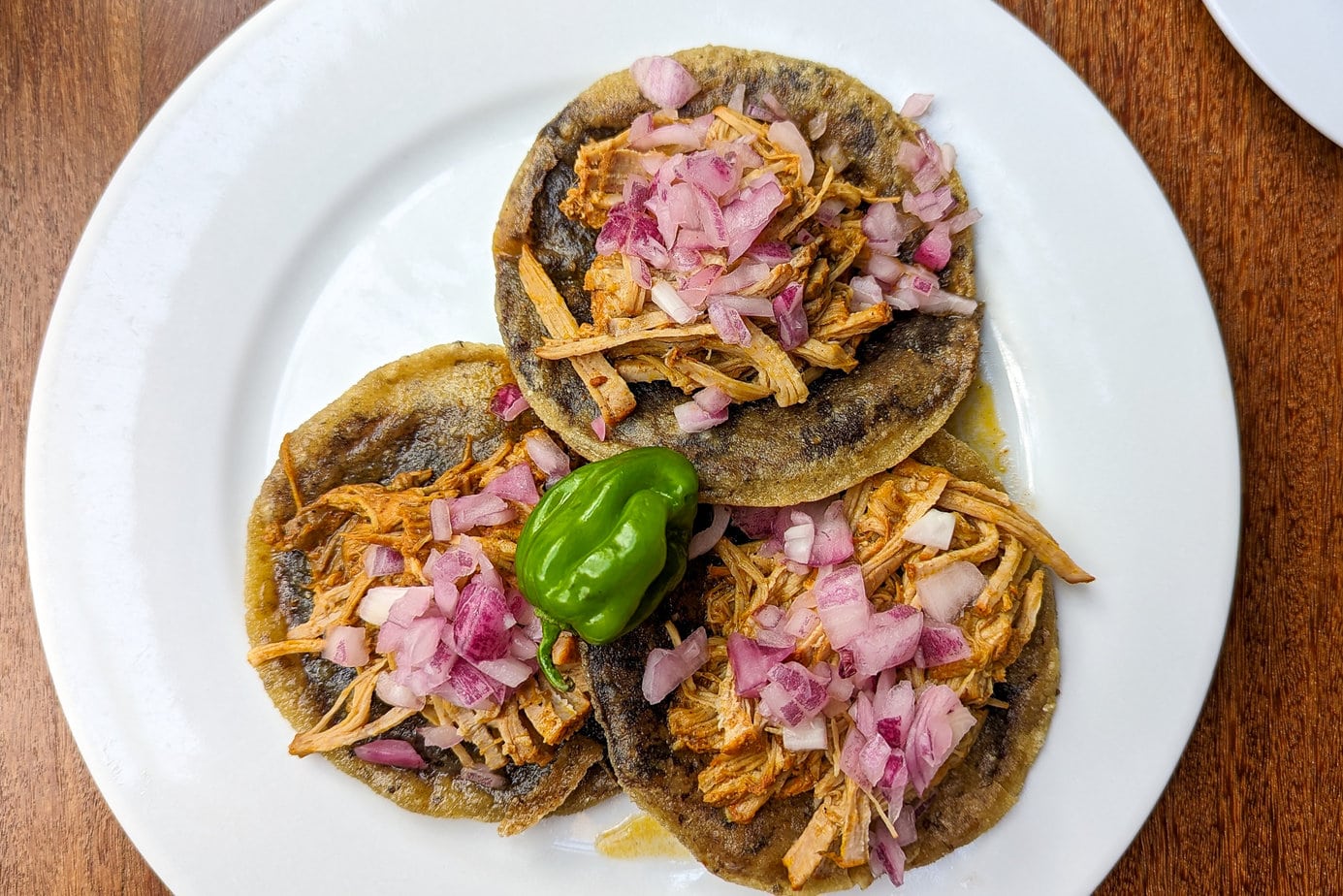
I watched coco with my nephew a few weeks ago (I loved it ?). I think the festival and the beliefs behind it are fascinating. Great read!
Ahhh it’s such a great film isn’t it?! Made me cry my eyes out at the cinema! I loved exploring the towns around Patzcuaro – it was like being inside the movie!
I’m finally making it to Morelia and Patzcuaro for Dia de Los Muertos this year! I was wondering if face painting is something only tourist do? I don’t want to to be disrespectful or stand out in the crowd by doing so, but here, in Los Angeles, everyone does at all the festivities. I was in San Miguel de Allende, in 2019, and there was tons of artists painting faces. From what I’ve read, 3very city is different, and in the videos I’ve seen of Patzcuaro, only people in parades, are in costume. Any advice you can give me is much appreciated.
Hi Christina! Face painting definitely seemed less common in Patzcuaro than in other spots (like Oaxaca and CMDX). But there were people in costume and facepaint around, particularly in Morelia and during the day – it seemed more common amongst the younger generation. I was with a few Mexican friends, one a local from Morelia, and they all encouraged me to get the facepaint (I think bc they know how much of a child I am!!), and there were a few locals getting theirs done at the same time as me. I don’t think anybody would find it disrespectful – but you might stand out a bit more than in say Oaxaca where it’s more common. Maybe wait until you’re there and make a decision once you see what it’s like on the street? There were a few people painting faces when I went so I think you’ll be able to find someone if you go and then decide you want it done. Hope that helps :)